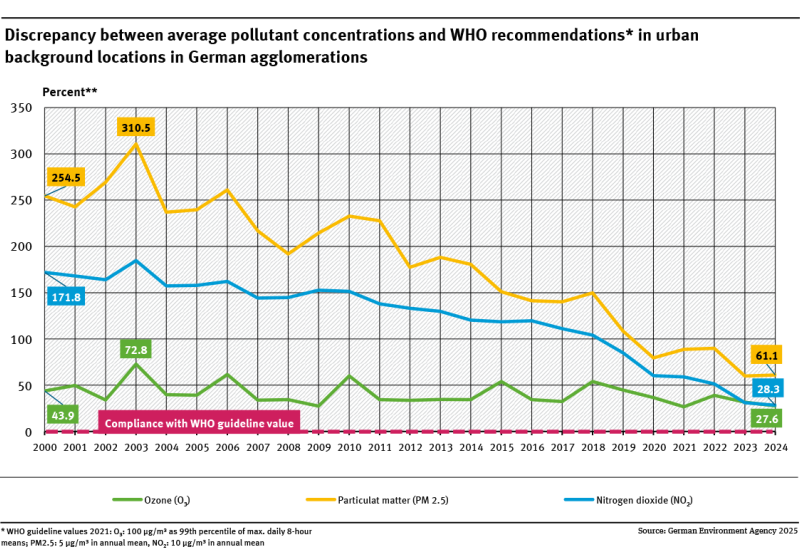Experts at the monitoring stations of the German states and the German Environment Agency take multiple daily measurements to determine the air quality in Germany. Shortly after measurements are taken, you can go to our “Current air data” webpage to look up measured values, some forecast data, and data on past years. read more
ozone
Air
Information on the O3 exceedance table
The table shows the up-to-date number of days of ozone exceedances in the current year at the measuring stations of the German States and UBA. read more
Health
Special Exposure Situations
Exceptional exposure situations deserve special consideration. They occur when usual or expected environmental conditions are not met. Human health is particularly at risk in these often extreme stressful situations, therefore environmental hygiene and environmental medicine take up a position on such topics. read more
Umwelt-Indikator
Indicator: Air quality in agglomerations
The basic pollution levels in German conurbations significantly exceed WHO recommendations from 2021 for particulate matter (PM2.5) and nitrogen dioxide (NO₂).In the vicinity of pollutant sources, pollution levels can even be significantly higher.The situation for NO₂ and PM2.5 has improved considerably since 2000, but the WHO recommendations for 2021 are still clearly exceeded.Ozone and PM2.5 pol... read more



